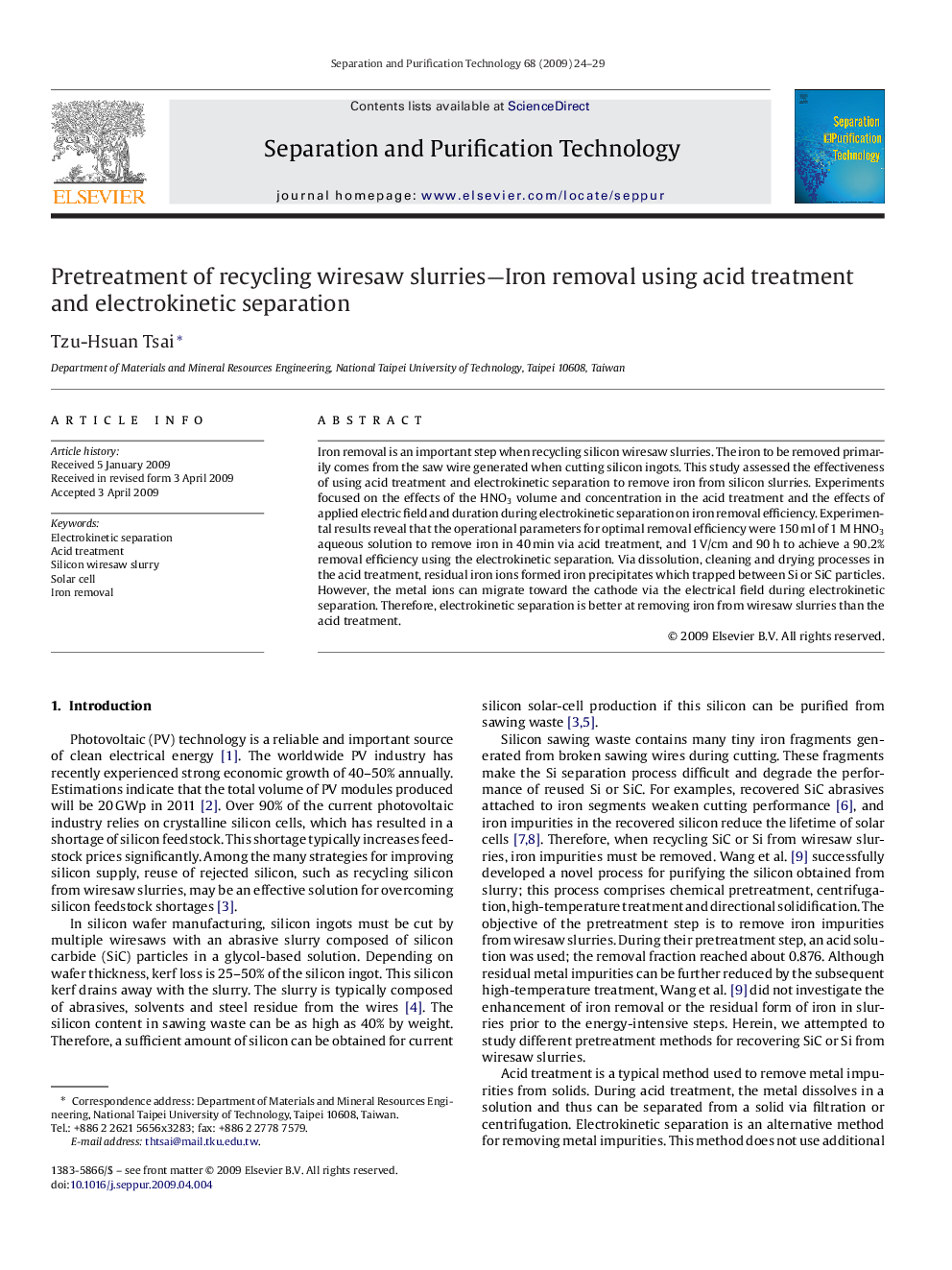| Article ID | Journal | Published Year | Pages | File Type |
|---|---|---|---|---|
| 643053 | Separation and Purification Technology | 2009 | 6 Pages |
Iron removal is an important step when recycling silicon wiresaw slurries. The iron to be removed primarily comes from the saw wire generated when cutting silicon ingots. This study assessed the effectiveness of using acid treatment and electrokinetic separation to remove iron from silicon slurries. Experiments focused on the effects of the HNO3 volume and concentration in the acid treatment and the effects of applied electric field and duration during electrokinetic separation on iron removal efficiency. Experimental results reveal that the operational parameters for optimal removal efficiency were 150 ml of 1 M HNO3 aqueous solution to remove iron in 40 min via acid treatment, and 1 V/cm and 90 h to achieve a 90.2% removal efficiency using the electrokinetic separation. Via dissolution, cleaning and drying processes in the acid treatment, residual iron ions formed iron precipitates which trapped between Si or SiC particles. However, the metal ions can migrate toward the cathode via the electrical field during electrokinetic separation. Therefore, electrokinetic separation is better at removing iron from wiresaw slurries than the acid treatment.
